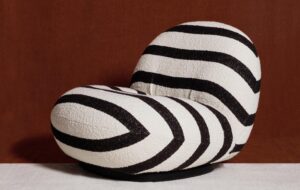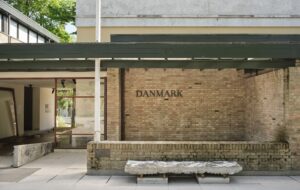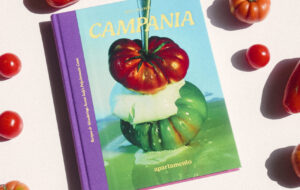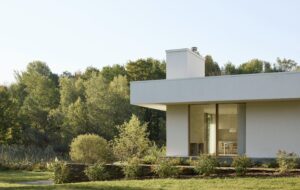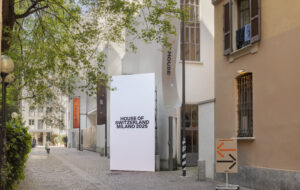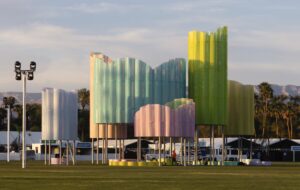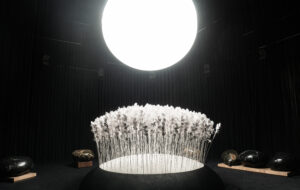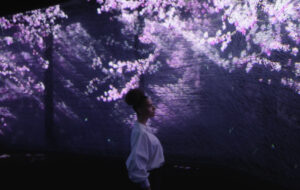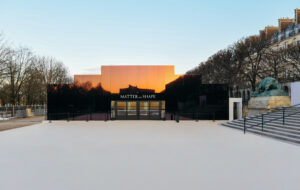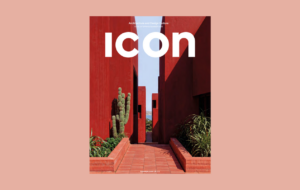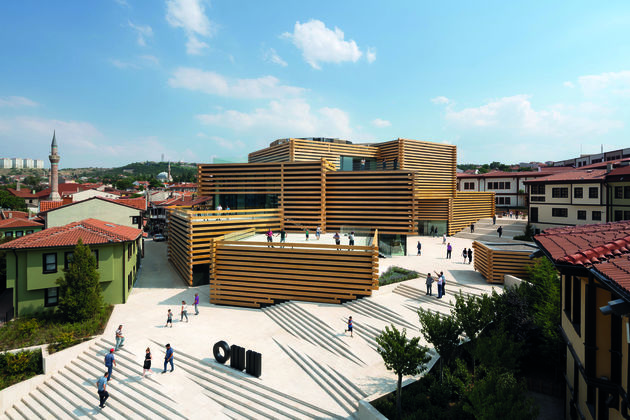 The approach to OMM by Kengo Kuma and Associates. Image via NAARO
The approach to OMM by Kengo Kuma and Associates. Image via NAARO
At the Odunpazari Modern Museum in northern Turkey, the Japanese firm plays with scale and traditional forms to reference the past. By Matthew Turner
Those familiar with Nuri Bilge Ceylan’s Grand Prix winning film, Once Upon a Time in Anatolia (2011), will know the Anatolia region of Turkey as a sequence of harsh, unforgiving, rolling hills, dimly illuminated by dusty car headlamps. Yet Eskişehir, west of where filming took place and the location of Kengo Kuma and Associates’ new Odunpazari Modern Museum, couldn’t be more different.
Walk a rough cross-section from north-west to south along the rapidly developing city’s arterial axis, and you will be met with a rapid succession of juxtaposed episodes, exemplifying the energy and variety typical of places making new identities for themselves.
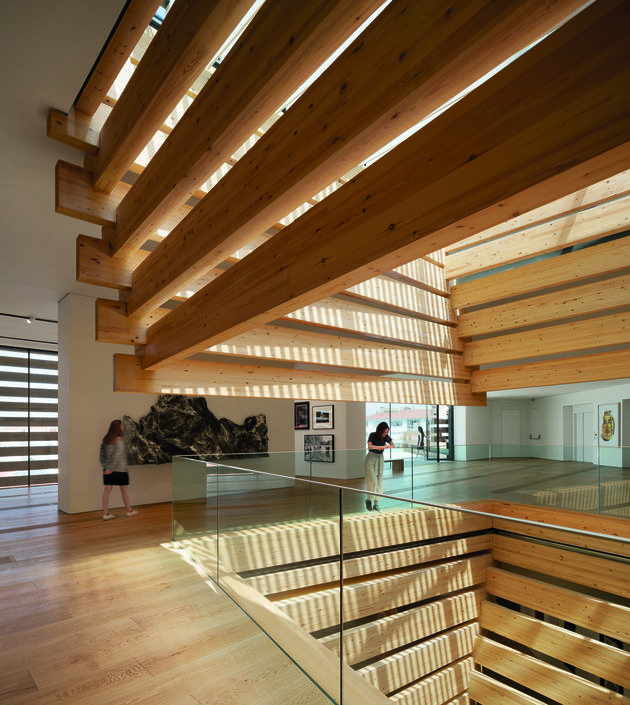 Inside, the timber layers continue. Image via NAARO
Inside, the timber layers continue. Image via NAARO
Shortly after you pass Reşadiye Mosque is the historic quarter of Odunpazari, its bizarre timber buildings styled and constructed like the houses in a Japanese or Swiss village, with post-and-beam structures and soffits. On this threshold between old and new, unfortunately interrupted by a duel carriageway, sits the Odunpazari Modern Museum (OMM) by Kengo Kuma and Associates.
Read more: Kengo Kuma’s V&A is a living room for Dundee
The project was led by Yuki Ikeguchi, chief project manager and partner at Kengo Kuma and Associates. The museum itself has multiple aims: to display the vast art collection of its founder, construction magnate Erol Tabanca; to stand as a landmark that stitches the city back to its heritage; and to provide residencies and other opportunities to local artists, students and crafts people. Essentially OMM’s ambition is to consolidate and intensify the city’s burgeoning cultural scene. Its inaugural exhibition, titled Vuslat, features an extremely varied selection of mostly Turkish art, including standout work by Ankara-born Bora Akinciturk and Guido Casaretto.
From the busy northern roadside entrance, the building stands out but doesn’t look out of place, thanks to the manner in which the architects have abstracted the traditional built elements around it. A series of cascading staircases, broken up by a zig-zag ramp, lead visitors up to the building, which is also a concoction of angles, echoing the eccentric Ottoman-era street plan, and the skewed edges that time and gravity have wrought on the surrounding vernacular timber chalets.
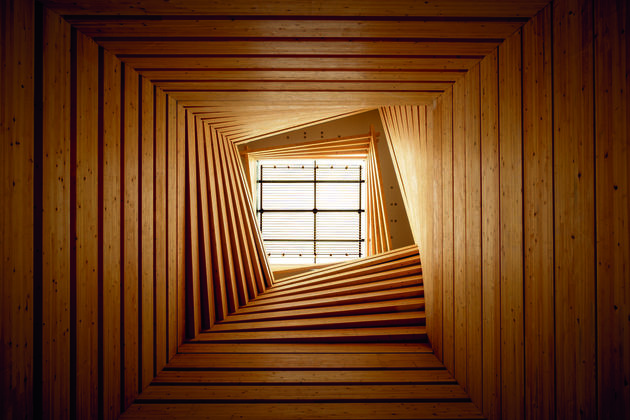 Twisting beams offer new perspectives. Image by Batuhan Keskiner
Twisting beams offer new perspectives. Image by Batuhan Keskiner
The building’s form is made up of one rectangle intersecting another at an angle, resulting in a pile of fanned volumes projecting out towards the road. A twisting movement continues seamlessly into the entrance staircase and auditorium and the central light well cuts through the building, intensified by a vertigo-inducing forced perspective of spiralling timber blocks. Ikeguchi describes this twirling dynamism as a way of mimicking the energy that is involved in perceiving art, and of creating a fluid link between the interior and exterior of the building.
This whole composition is clad in engineered yellow pine shipped from Siberia (so much for sustainable and contextual design). The interlocking timber beams create woven edges, which defuse and dematerialise the exterior corners in a way that is typical of Kuma’s work. Although these elements are monumental from close range, they have been thoughtfully articulated – which is uncommon in buildings of this size. Sometimes the interlaced and overlapping corners disappear, allowing people to walk freely past.
The facade treatment lends the building an unexpected intimacy. The result is that from a distance it looks large and small at the same time – both an eye-catching feature and a delicate and subtle intervention in the cityscape. This ambiguity of scale creates lightness from something that should be heavy, a landmark of subjective experience rather than architectural flamboyance.
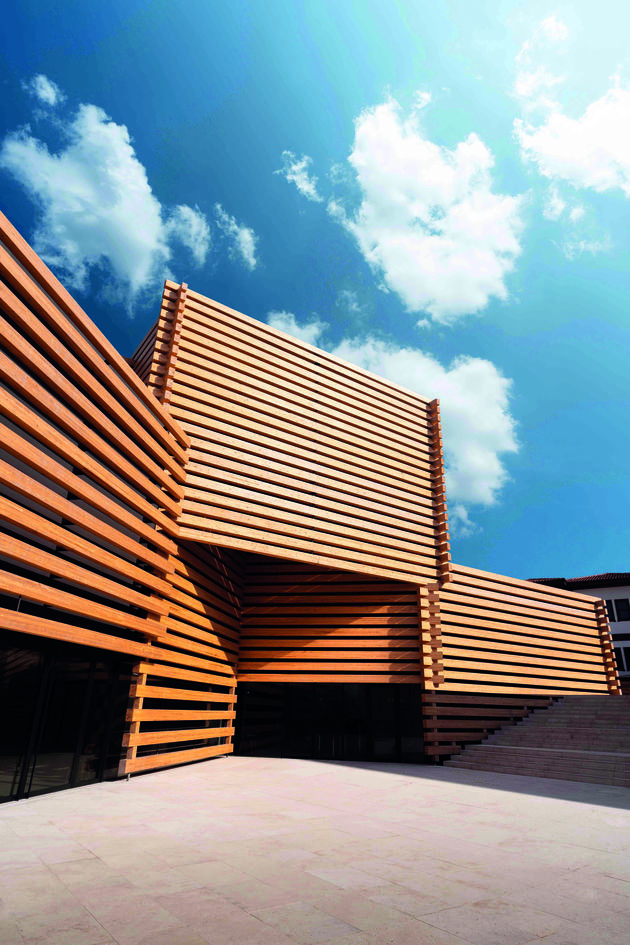 The timber cladding is yellow pine from Siberia. Photo by Batuhan Keskiner
The timber cladding is yellow pine from Siberia. Photo by Batuhan Keskiner
Close attention has been paid to the building’s context. The Odunpazari district roughly translates as ‘wood market’ in English, harking back to the area’s function at the time of the Ottoman Empire. The museum may look Japanese in its timber structure, but it’s not difficult to see it as a ghostly evocation of the piles of timber that would have littered the area.
The use of timber also references the construction of the surrounding traditional buildings, only amplified in Kuma’s game of scale. Under the flaking lime mortar of the nearby buildings can be seen the bağdadi wall construction technique – similar to wattle and daub – typical in Anatolia. This involves layers of slender timber laths, which have been replicated at a larger scale at OMM. There are also resonances of the block timber wall houses that can be found in the Black Sea region of northern Anatolia.
After the entrance staircase and light well, the dynamic forms of the exterior and the contextual approach quickly peter out to make way for more standardised white-walled gallery spaces and a pokey staircase that links all the main floors. It would have been interesting to see how the ideas explored on the outside could have manifested themselves in complex and nuanced interior spaces. The contrast in aesthetic here is probably not down to a lack of interest from the architect, but rather the desire of the clients of such cultural projects for white-cube minimalism when it comes to areas where art will be exhibited.
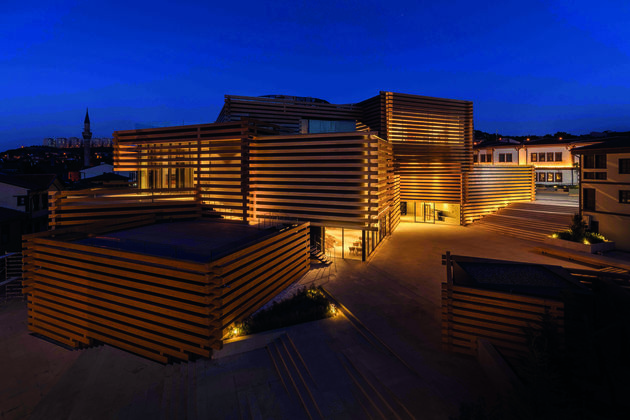 The museum team has planned a series of talks, residencies and seminars. Photo by Batuhan Keskiner
The museum team has planned a series of talks, residencies and seminars. Photo by Batuhan Keskiner
In his 2008 text, Anti-Object, Kuma discusses how the Weimar-era German architect Bruno Taut abhorred objects, believing that architecture was more a matter of relationships. It is perhaps the way in which the building facilitates such a network of gestures and relationships that makes Eskişehir’s OMM successful. It creates links between large and small scale in its construction; it rekindles Turkey’s once ubiquitous use of timber, by showing how it can be used architecturally today; it fertilises exchanges between local crafts people and the wider art market, and hopefully between art in Turkey and the rest of the world.
In the future, the museum has plans for a dynamic public programme of seminars, artist talks, workshops and residencies, which means that the building’s various networks are destined to blur out into the community. Vital moving forward will be attaining sponsorship that can keep it free from state control and allow it to challenge contentious issues such as its treatment of LGBTQ communities in Turkey.
Curated with care, OMM has real potential to grow into a landmark of experiential relationships.

